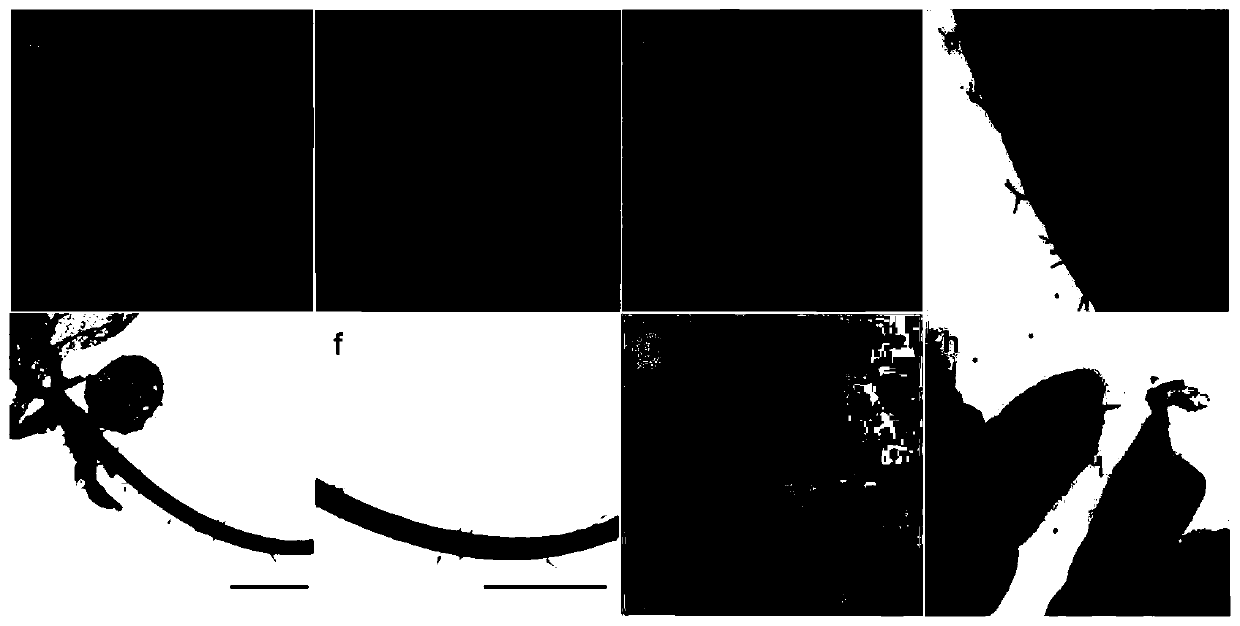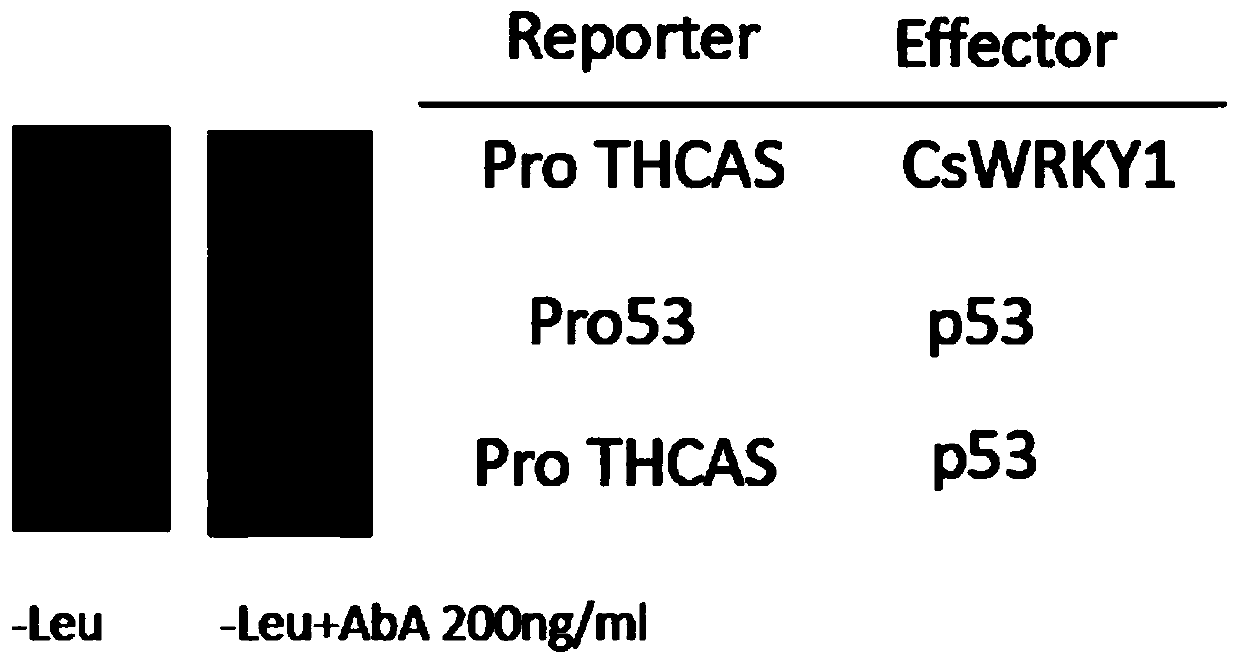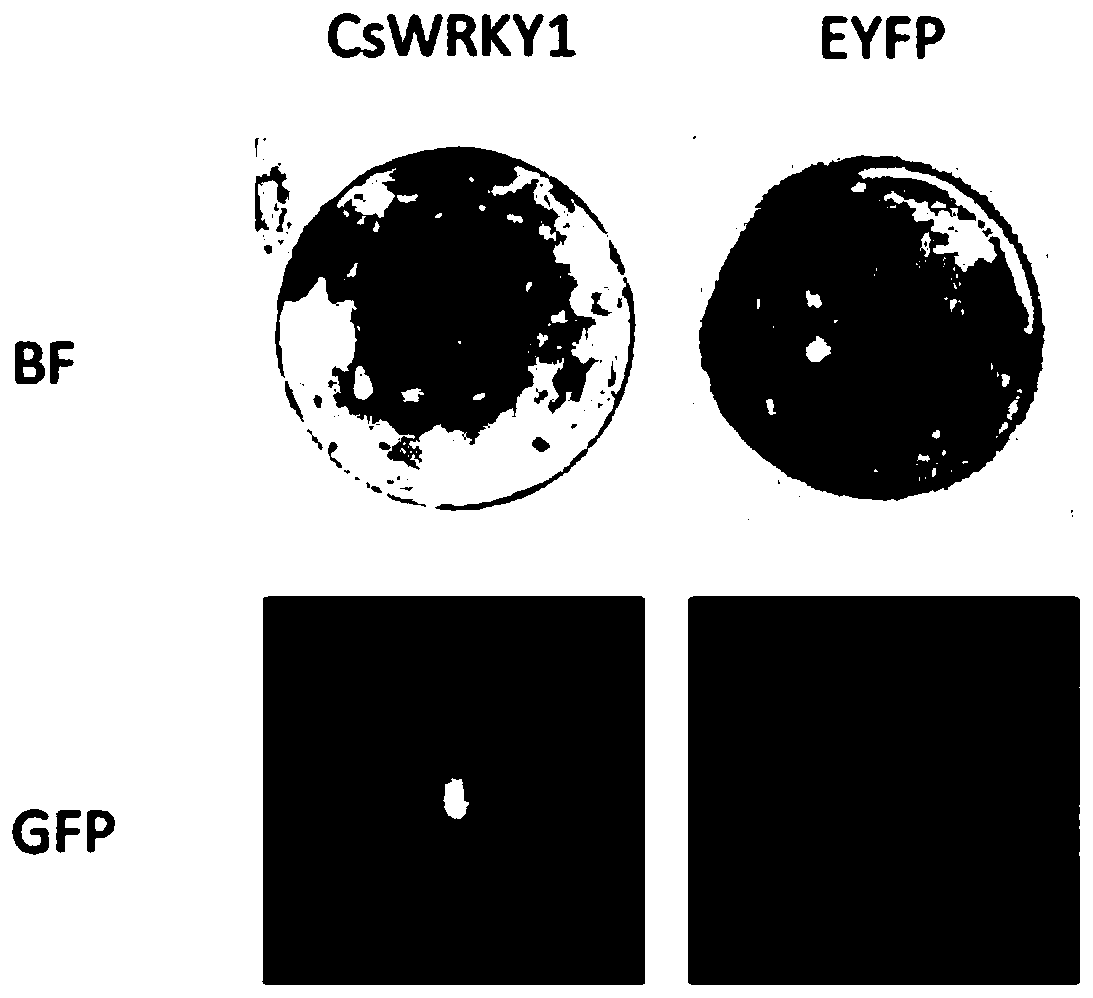Transcription factor CsWRKY1 separated from glandular hairs of marihuana and application thereof
A technology for transcription factors and cannabis glands, which can be used in applications, genetic engineering, plant genetic improvement, etc., and can solve the problems of difficulty in screening and identification of transcription factors.
- Summary
- Abstract
- Description
- Claims
- Application Information
AI Technical Summary
Problems solved by technology
Method used
Image
Examples
Embodiment 1
[0038] The 548bp THCAS promoter was cloned with gene-specific primers, and the binary vector pMDC163:ProTHCAS:GUS was constructed using Gateway technology. Next, Agrobacterium was used to transform Arabidopsis thaliana, and 10 independent ProTHCAS:GUS transgenic lines were analyzed. The expression of the GUS reporter gene was analyzed histochemically in different plant organs, and the results were as follows: figure 1 As shown, among them, picture a: cotyledon of 6-day-old seedling; picture c: mature leaf; picture e: stem; picture g: flower; picture b, d, f, h are trichomes in picture a and picture c respectively Close-up views on , e, and g. a, c, e, g=1000 μm; b, d, f, h=500 μm. It can be seen from the figure that the GUS activity is only in the leafy organ ( figure 1 a-h) and stem ( figure 1 e, f) Observed in trichomes. In flowers, GUS activity was detected only in the trichomes of sepals ( figure 1 g, h).
Embodiment 2
[0040] The same THCAS promoter used for the GUS expression assay was cloned in the MCS (KpnI(5') and XhoI(3')) upstream of the AUR1-C gene in the yeast vector pAbAi using yeast one-hybrid technique to screen for targeted binding sequences subfragment. The AUR1-C gene is an antifungal antibiotic resistance gene. The constructed vector structure was ProTHCAS-AbA, digested and cut by BstBI enzyme, and transformed into Y1HGold yeast strain using PEG-mediated transformation method according to the instructions. Using the URA3 gene of pAbAi as a selection marker, it was integrated into the non-functional ura3 site of Y1HGold yeast strain. Transformants were selected on media lacking synthetic glucose and verified in colony PCR. Using Y1HGold-ProTHCAS-ABA as the material, the Y1H cDNA library was constructed using the mRNA of the female flower of Cannabis (Purple Kush). After filtering, the results are as follows figure 2 It can be seen from the figure that CsWRKY1 can interact ...
Embodiment 3
[0042] To determine the subcellular localization of CsWRKY1, the full-length CsWRKY1 coding region was fused to full-length enhanced yellow fluorescent protein (EYFP). The CsWRKY1-EYFP fusion construct as well as EYFP were transiently expressed in protoplasts isolated from Arabidopsis leaves under the control of the 35S promoter. CsWRKY1-EYFP was only observed in the nucleus ( image 3 ), which is consistent with its role as a transcription factor.
PUM
 Login to View More
Login to View More Abstract
Description
Claims
Application Information
 Login to View More
Login to View More - R&D
- Intellectual Property
- Life Sciences
- Materials
- Tech Scout
- Unparalleled Data Quality
- Higher Quality Content
- 60% Fewer Hallucinations
Browse by: Latest US Patents, China's latest patents, Technical Efficacy Thesaurus, Application Domain, Technology Topic, Popular Technical Reports.
© 2025 PatSnap. All rights reserved.Legal|Privacy policy|Modern Slavery Act Transparency Statement|Sitemap|About US| Contact US: help@patsnap.com



